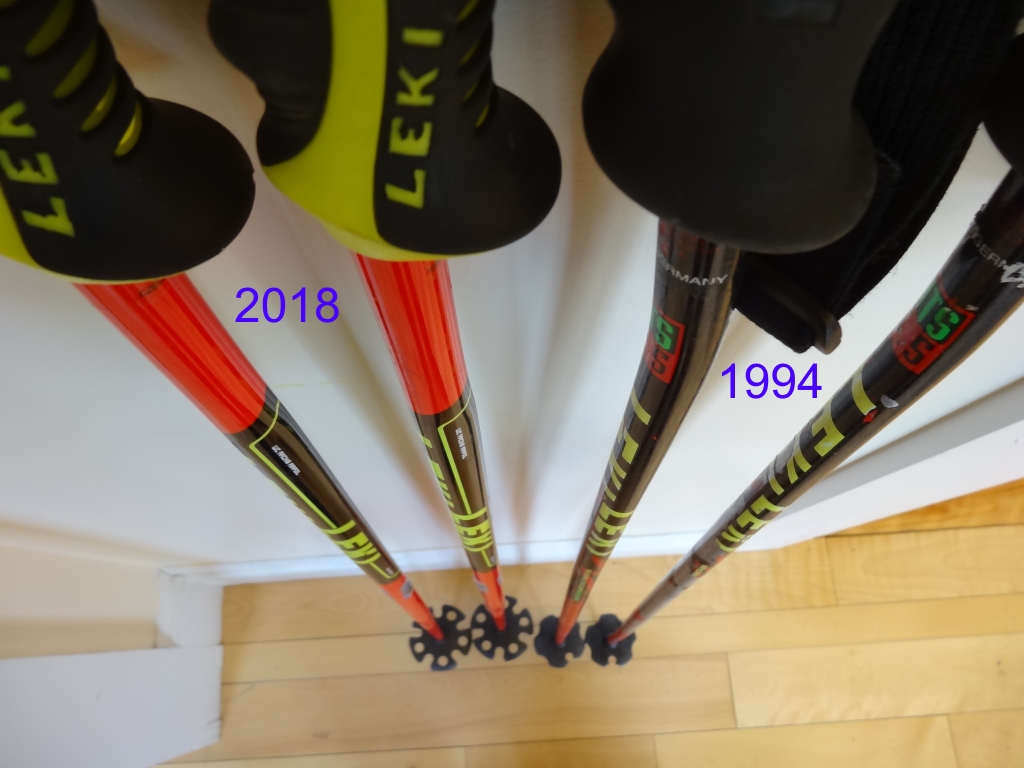 Sometimes you get what you pay for. We've never really seen a long-term ski pole test, and since we like the idea of finding ski products that last a REALLY long time without failure, we figured a pair of poles showing zero problems, breakage, bending, parts-loss or any failure whatsoever after 24 years of intense abuse and neglect across two continents of summer and winter usage was worth a few words.
Sometimes you get what you pay for. We've never really seen a long-term ski pole test, and since we like the idea of finding ski products that last a REALLY long time without failure, we figured a pair of poles showing zero problems, breakage, bending, parts-loss or any failure whatsoever after 24 years of intense abuse and neglect across two continents of summer and winter usage was worth a few words.
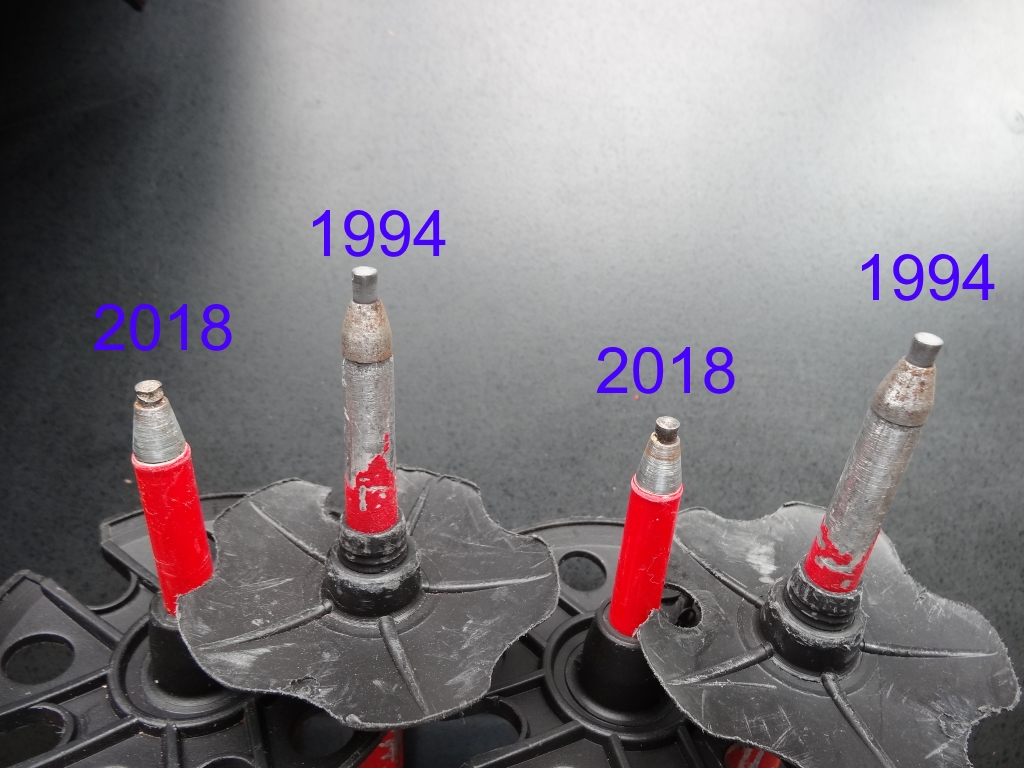
New (2018) and 24 year-old (1994) Leki Worldcup pole carbide tip assemblies
Full-dislosure: Leki supported our ExoticSkis.com ski testing program by donating test poles for our Leki Vario Ski Pole test back in 2014, and provided ski poles for our test crew in 2018. We believe in honest, detailed reporting of ski gear, and disclosure of product donation or pro-form discounts is part of that reporting. We report our real experiences with gear we review, and if we like it, we say so. If we don't like it, we say so. We don't like ski gear that falls short of performance or durability expectations, so we wouldn't use anything that makes us unhappy. Leki poles have been making us happy with flawless performance and durability for years, so we continue to use them and wanted to let you know how they have held up under constant abuse.
The Test:
One of my best ski buddies who worked in a ski shop hooked me up with a pair of Leki Worldcup poles in the winter of 1994-1995. Since that time, I've been abusing this pair of poles with countless ski days in:
- rock-hard, icy conditions
- root, rock and stump-infested forest terrain
- storms,
- rain,
- powder,
- icy, crusted windpack
- grass-skiing
- 3-season hiking in rocky, gravely trails, muddy, mossy conditions...you name it.
These poles saw:
- ski racing
- race coaching (serious leaning-on-your-poles-for-hours-on-end and marking line selections in the icy surface of SL and GS courses...),
- bushwacking,
- jumping,
- bumping,
- wacking cornices
- countless yard-sale crumple-crashes and violent impacts on unforgiving surfaces at speed.
- crashes into saplings, trees and logs
- javelin-toss lawn dart competitions
- makeshift seating spanning across logs and rocks
- palm-on-top-of-grip pole-vaulting over streams and craggy bits
- poking buddies in the backside
- popping countless bindings off in a rushed manner
- popping heel pieces off from buddies in lift lines
- wacking lift towers to make 'em "ring"
- pushing and pulling ski boot buckles on and off on chair lifts
- wacking snow and ice off the bottom of ski boots before stepping into bindings
- raking gear from the deep inside the car or truck closer to you
- Samurai slicing icicles off things
- sword fights with buddies
- snowball batting practice
- bashing brush and saplings out of the way boogying through the woods
- popping beer caps off bottles...
...all the things we use ski poles for.
The Leki Worldcup poles have featured high-quality aluminum alloy shafts, carbide tips and durable grips for decades, and this pair of 1994-vintage poles have demonstrated what you get when you build a product with top-shelf materials and assemble them with careful craftsmanship and vigilant quality control. A couple of things stand out when you spend the money on a high-end ski pole:
- The shaft withstands crashes by rebounding to its original shape instead of staying bent. Deflect a cheap pole, and it will crimp or stay bent. Deflect a top-quality pole, and it will return to its original shape nearly 100%.
- The tips stay sharp and sturdy. Cheap ski pole tips don't age well. The ice tips go missing, get broken or fractured after a couple seasons of normal usage. A high-quality pole tip doesn't disintegrate or lose its components.
- The grips (with or without straps) stay tacky, functional and tightly attached to the shafts. Cheap pole grips often get hard, slick, loose and unfriendly after a few seasons, or their straps fall apart, sack-out or begin to fray. High-quality ski pole grips stay grippy, tight and durable.
Don't Do This To Your Poles:
My old Leki Worldcup poles began to shed their paintjob after a few seasons as soon as the surface was scarred by ski edges or rocks on the slopes, or by miscellaneous junk they shared space with in the ski pod year after year. I tend to abuse my poles by tossing them into a ski box first, then piling tons of skis on top of them, cramming and jamming the gear in, hoping to "...get just one more pair of skis into the box and get it to close...". This is straight-up gear abuse. Don't do it. I should repent and renounce my evil ways...but old habits die hard... Great poles don't deserve to be tossed into the bottom of a box of heavy, sharp-edged skis bouncing around on the pothole-riddled, rut-infested dirt roads like a 12mm wrench in a junky toolbox full of hammers, clamps, screwdrivers and other hardware.
Bottom line: These Leki Worldcup poles have survived what we think is pretty typical abuse for 24 years, and they still work as flawlessly as the day they were torn from their shrink-wrap, and that's really cool. The high-end race pole costs more than a mid-range pole, but I have no doubt I would have needed at least 5 pairs of cheaper poles during that same time period, and been frustrated along they way as they either bent, broke or fell apart on a day out on the slopes, perhaps putting a harsh bummer on what would have been a really fun day in the snow. Our advice: buy a high-end pole, swap in your favorite baskets as-needed for the conditions (I like a fat basket on a race pole for all-terrain fun and games) and never worry about your poles again. Kudos to companies like Leki who build top-shelf poles with great materials and craftsmanship so skiers can enjoy decades of worry-free, reliable performance from their ski poles when they're outside having fun.
Pictures speak 1,000 words:
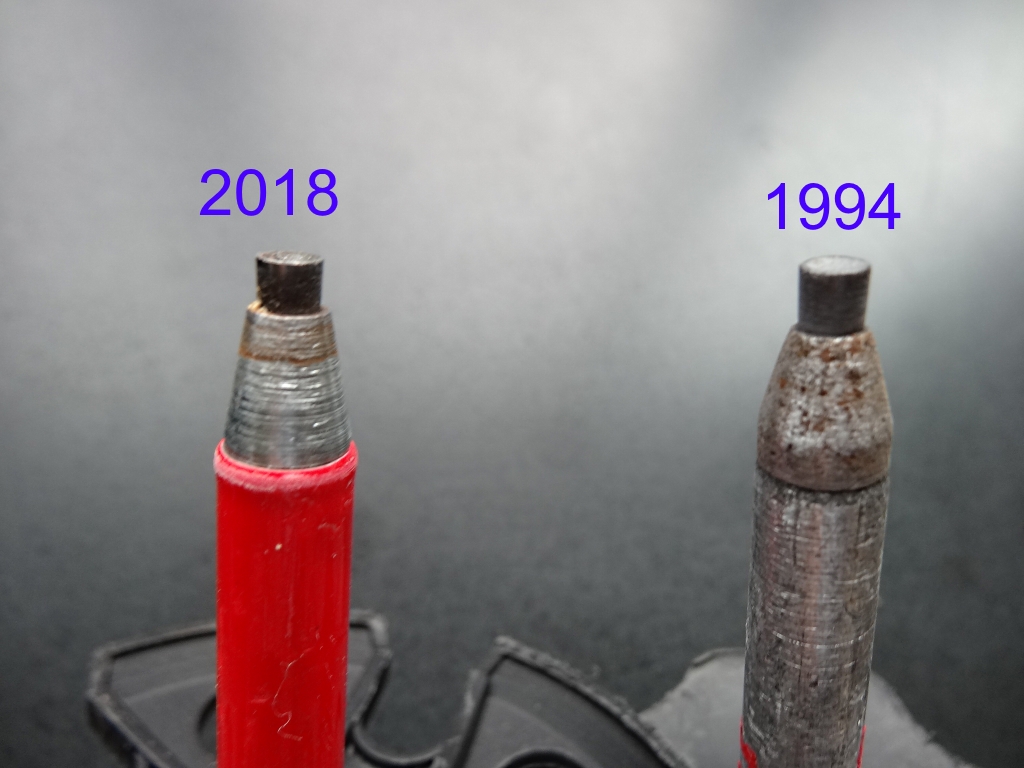
Leki Worldcup pole carbide tip assemlies 2018 (left - 1 season of usage) and 1994 (right 24 years of use)

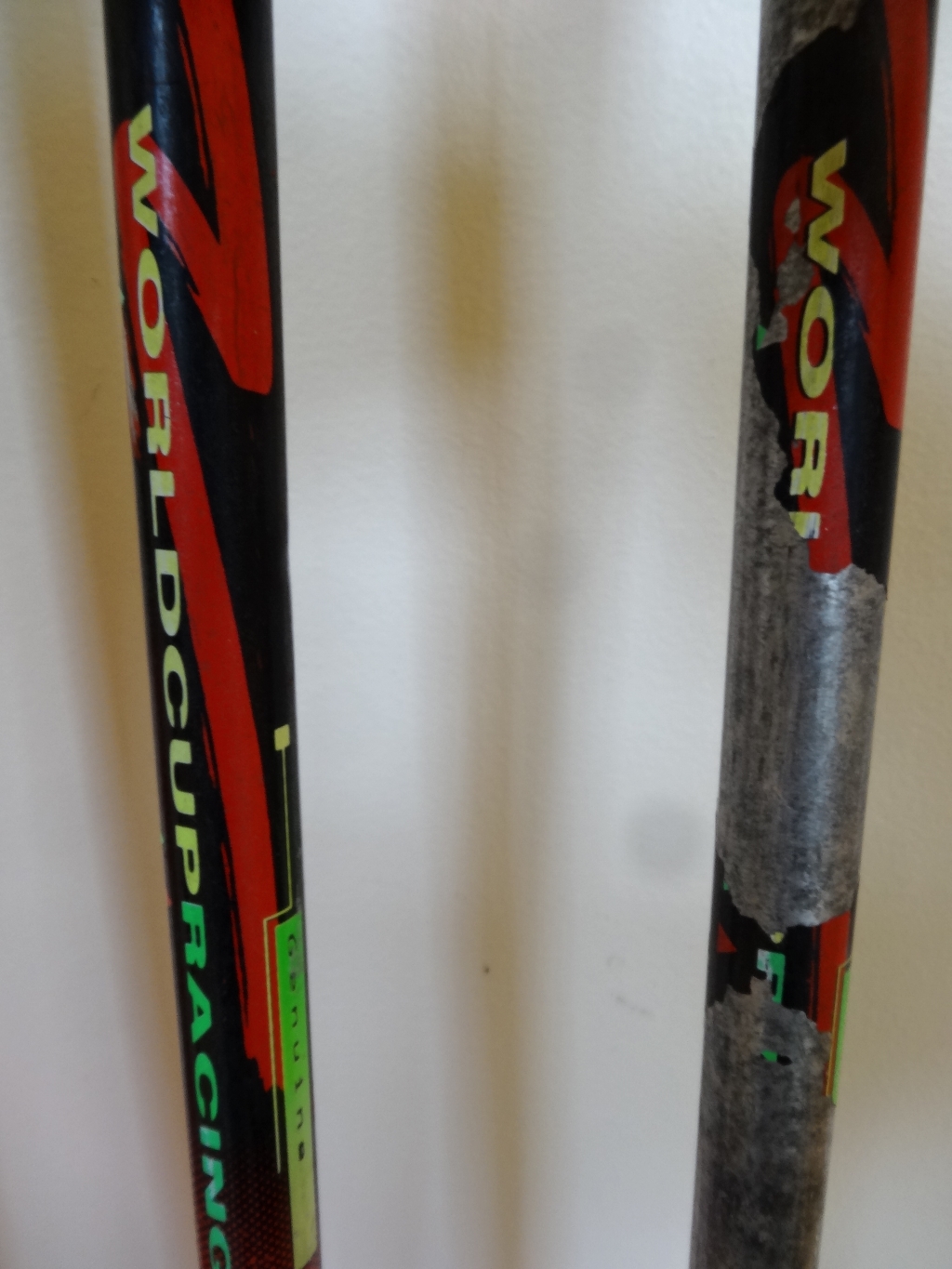
24-year old Leki Worldcup pole shafts showing paint loss
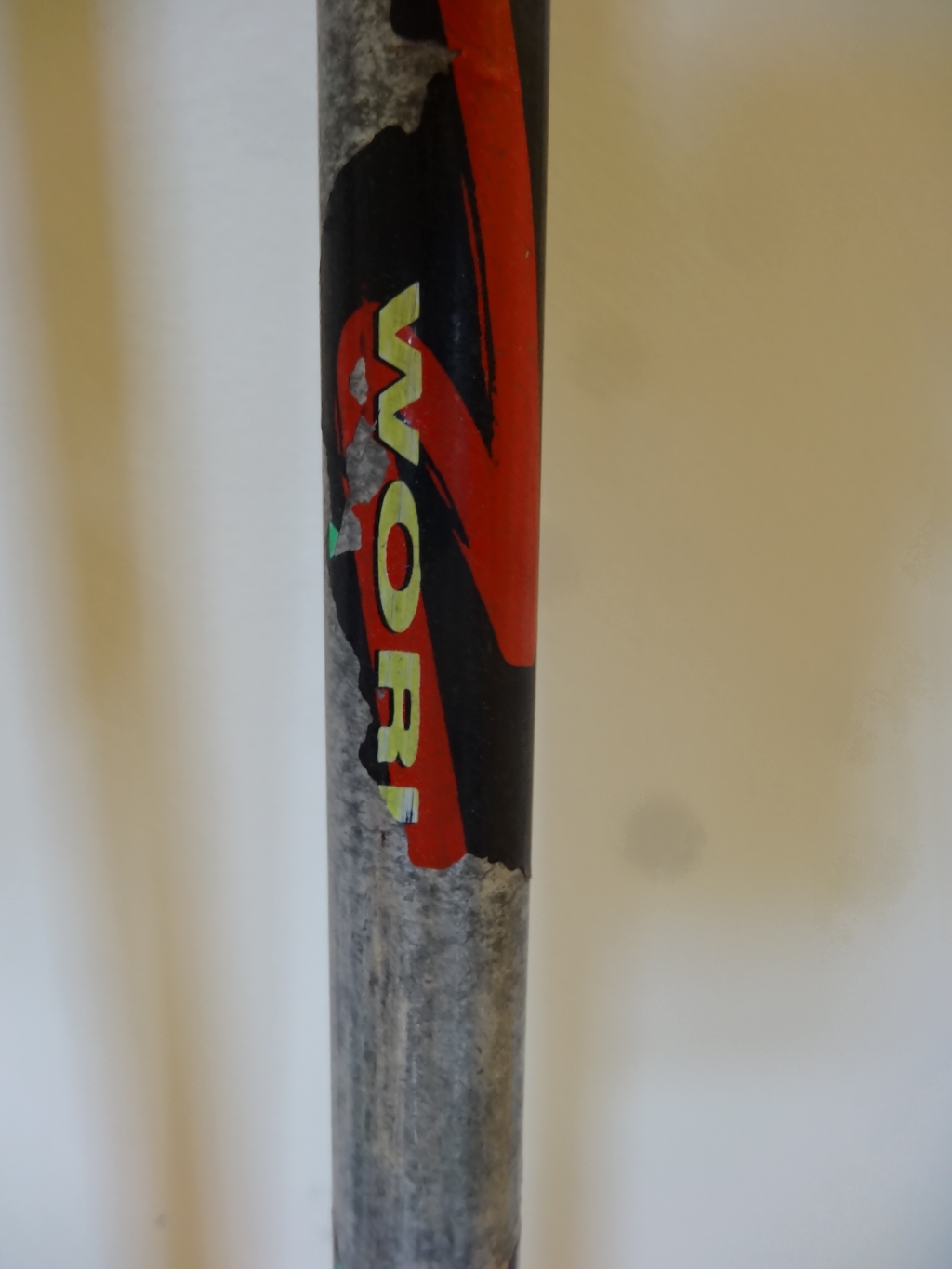
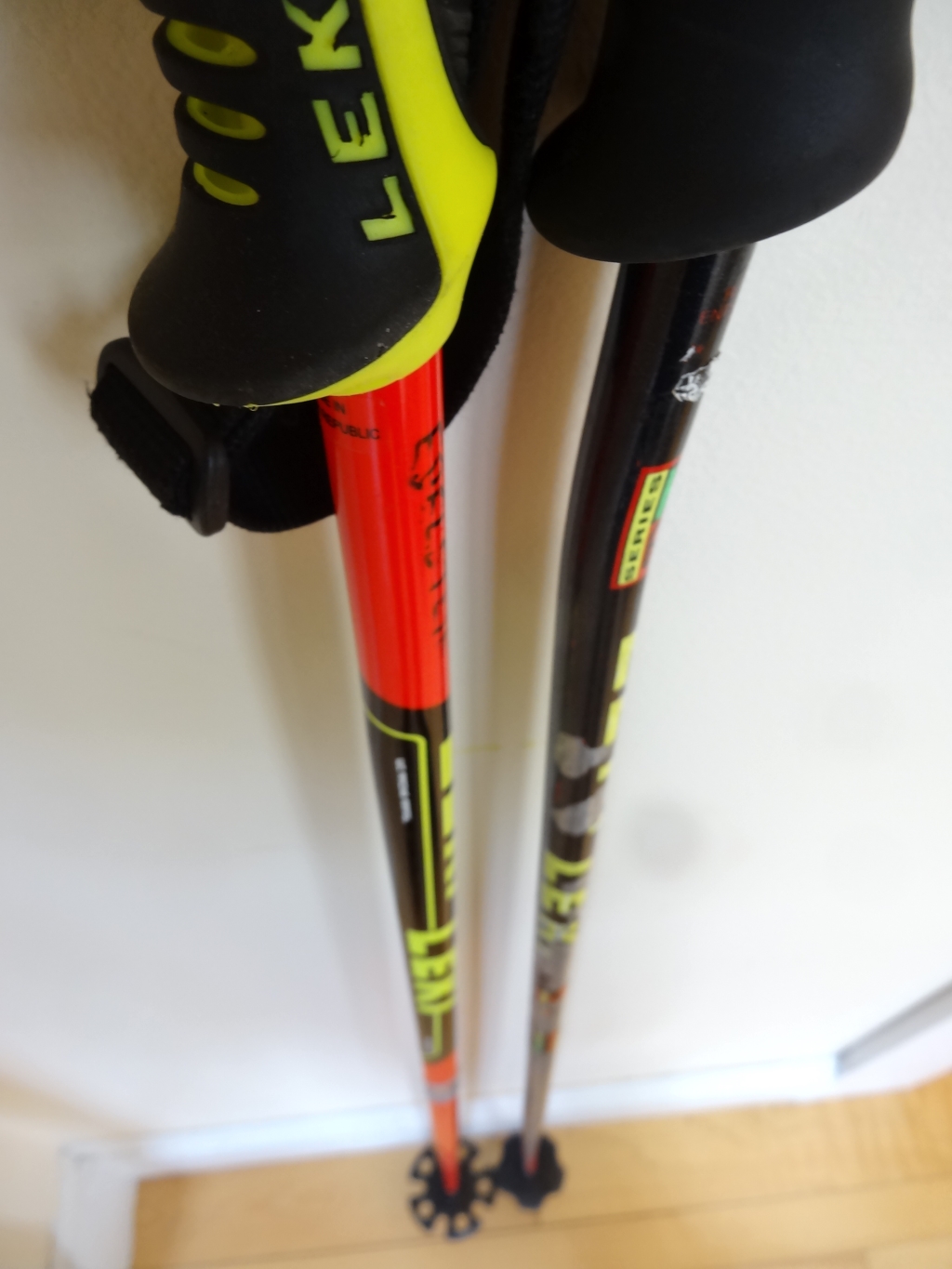
New, 2018 pole (left) and 24 year-old Leki Worldcup pole (right)
Note the straightness of the 24 year old shaft (yes, the offset top section is intentional)
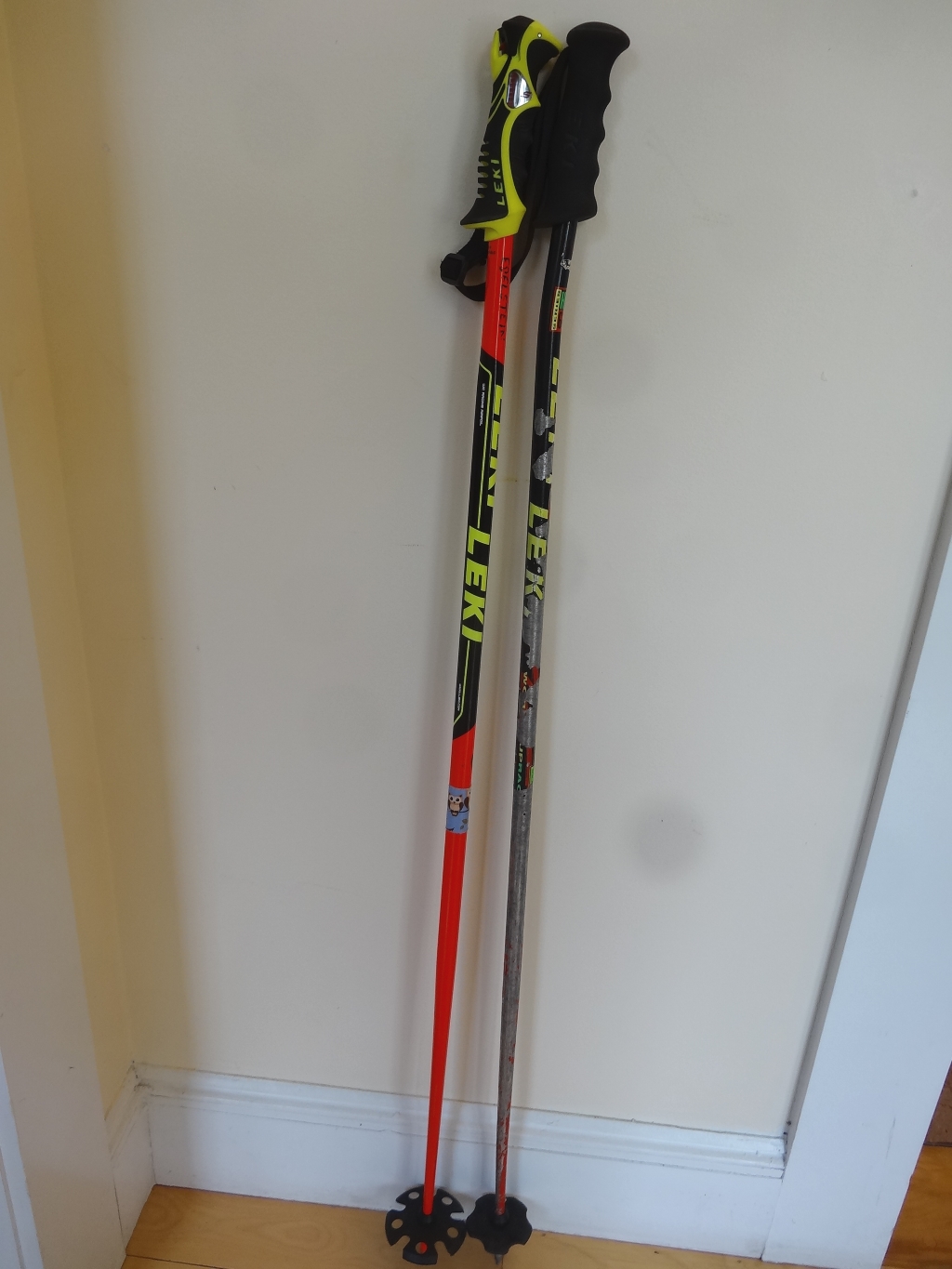
New 2018 (left) and 24 year-old (right) Leki Worldcup poles
(yes, the offset top section is intentional)
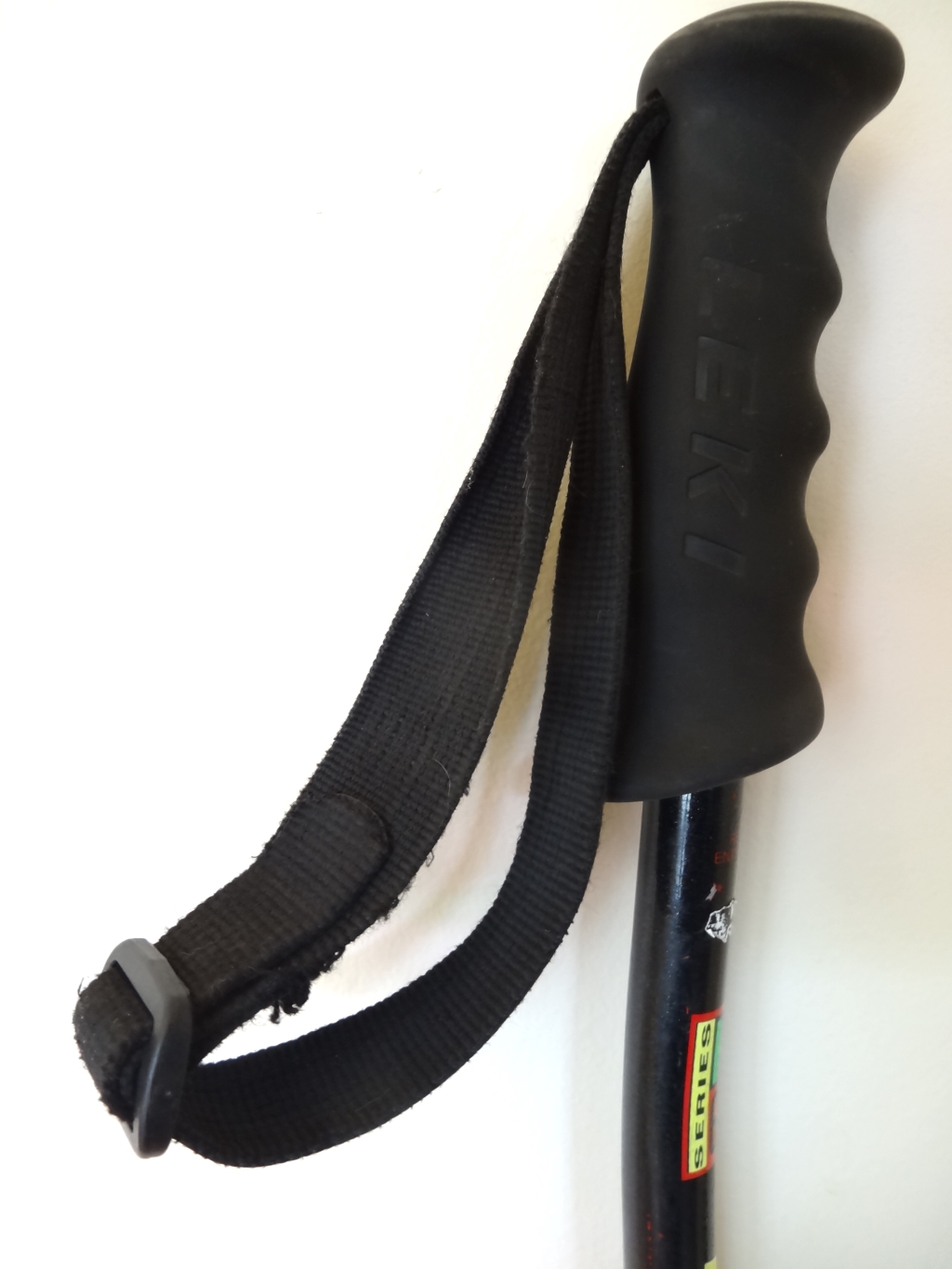
1994 (24 year-old) Leki Worldcup pole grip...
slightly worn, but still super tacky with strap in great condition.
